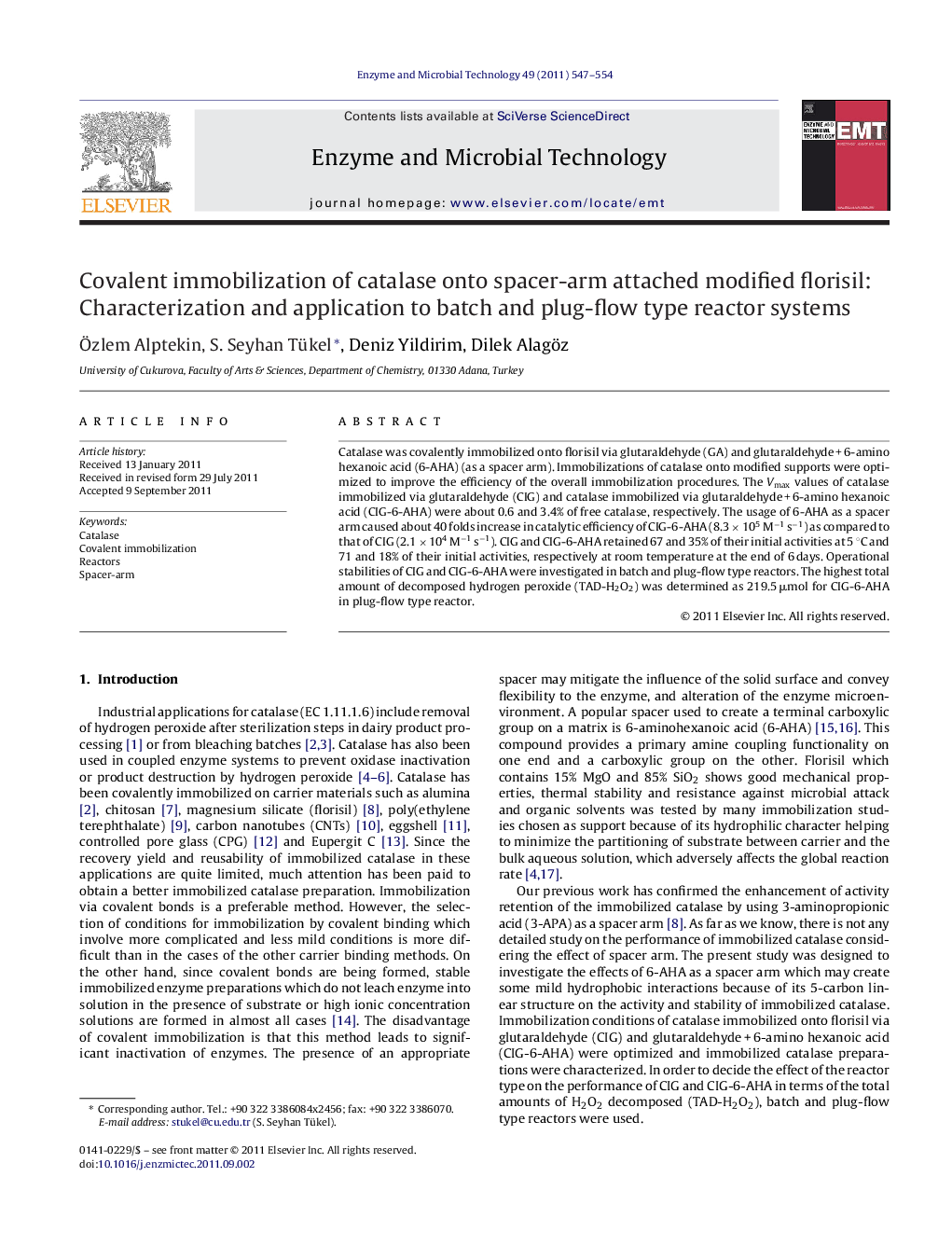| Article ID | Journal | Published Year | Pages | File Type |
|---|---|---|---|---|
| 17330 | Enzyme and Microbial Technology | 2011 | 8 Pages |
Catalase was covalently immobilized onto florisil via glutaraldehyde (GA) and glutaraldehyde + 6-amino hexanoic acid (6-AHA) (as a spacer arm). Immobilizations of catalase onto modified supports were optimized to improve the efficiency of the overall immobilization procedures. The Vmax values of catalase immobilized via glutaraldehyde (CIG) and catalase immobilized via glutaraldehyde + 6-amino hexanoic acid (CIG-6-AHA) were about 0.6 and 3.4% of free catalase, respectively. The usage of 6-AHA as a spacer arm caused about 40 folds increase in catalytic efficiency of CIG-6-AHA (8.3 × 105 M−1 s−1) as compared to that of CIG (2.1 × 104 M−1 s−1). CIG and CIG-6-AHA retained 67 and 35% of their initial activities at 5 °C and 71 and 18% of their initial activities, respectively at room temperature at the end of 6 days. Operational stabilities of CIG and CIG-6-AHA were investigated in batch and plug-flow type reactors. The highest total amount of decomposed hydrogen peroxide (TAD-H2O2) was determined as 219.5 μmol for CIG-6-AHA in plug-flow type reactor.
